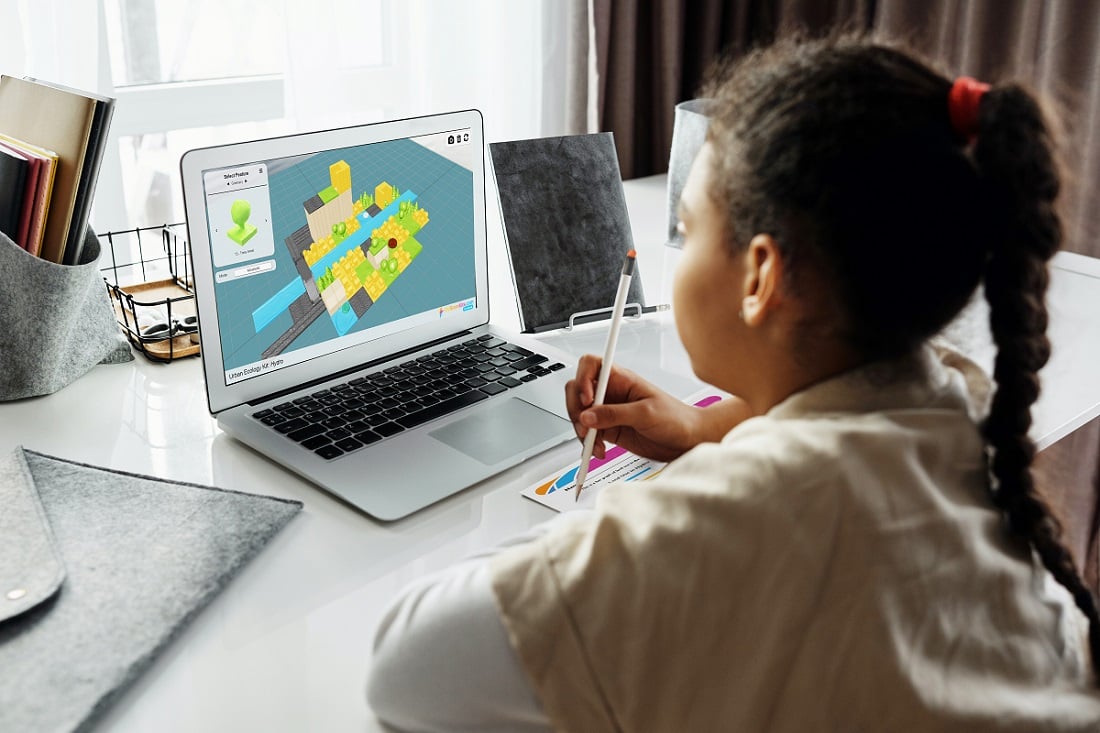
Many teachers are struggling with how to address STEM (Science, Technology, Engineering, and Math) topics in this time of social-distancing and remote-learning. Even for schools that are meeting in person, many of the hands-on lesson plans that teachers might have previously utilized are incredibly challenging under distancing and cleanliness guidelines. After all, who really has time to sanitize every block in a base-ten-blocks set between students? No one.
Due to these changing classroom environments, MyStemKits assembled a collection of their most-popular 3D-printable kits and modified them as virtual simulations. Now, those same engaging learning activities can be completed from anywhere, simply by using these virtual STEM kits. There are many virtual STEM kit options available that will allow students to sample invasive lionfish, launch rockets, and compare fractions. In this post, I want to share tips and tricks for utilizing these kits to teach engaging STEM topics and drive meaningful environmental change. Specifically, the Urban Ecology Kit since it can be used to teach a variety of topics at any grade level.
Like most of our virtual STEM kits, the Urban Ecology Kit features a selection of different modes to choose from. These modes allow you to control what the students can do with the simulation and what kind of data they receive. In addition to a build-it-yourself mode, there are also six pre-built cities. These pre-built cities are utilized in the lesson plans for this kit, allowing students to practice counting and graphing, calculate area, and more. The mathematical applications in this kit can be customized quite easily, from simply counting the number of houses to calculating and graphing the population density of different housing types and environments.
The science applications are also very adaptable to different ages and grades. In addition to housing, this kit includes pieces for parking and roads, commerce, water, greenery, and animals. Use these components to assume the role of urban engineers and investigate ways to create greener and more eco-friendly cities. For example, what changes can make the city more hospitable to deer or cattle egrets or bobcats? If you can’t tear down existing city structures, where can green space be added to an existing cityscape? Are rooftop gardens possible? Why or why not? What if animals are crossing busy highways at certain locations — how can you help protect the animals and the drivers? Solutions such as green bridges can be added to these cities. Planning solutions to such scenarios boosts active learning and critical thinking skills.

Once students have made their changes, they can simply take a screenshot directly from the online simulation and post it with their assignment. Whether you’re using this STEM kit in person or virtually, you get the opportunity to address many real-world challenges from traffic and population management to environmental protection and understanding ecosystems. That is one of the things I especially love about this kit — its flexibility.
Once your class has completed this virtual activity, take it to the streets. If your students are learning from home, have them safely explore their surroundings — the backyard, apartment balcony, or neighborhood block. Have them brainstorm about ways they can create an eco-friendlier environment at home. Could they plant flowers, trees, or shrubs? Or maybe add a bird bath and bird feeder? If your students are learning in-class, take a quick trip around the school grounds. What could be improved? Planning and implementing these green ideas will make a great class project!

Expand your view to your city. Encourage students to find something the city could improve upon, such as greening up medians, creating more natural parks, or adding green walls and bridges. Have students draw a picture of their improvement ideas and write a letter to their local officials asking for change. This can be done individually, in groups, or as a class. For older students, this also provides a great opportunity for real-world cost analysis. Challenge students to communicate their ideas, collect quotes, and provide cost estimates for each of their change propositions. Then, evaluate each idea for degree of possible impact and identify which change(s) are the most cost-effective.
Hopefully I’ve provided you with some interactive ideas on how to use the virtual STEM kits to drive lasting change, specifically the Urban Ecology Kit in this case. Let’s move on to the logistics of using these virtual STEM kits with your students:
- Log in to your MyStemKits.com account. If you don’t already have an account, create a free trial to test it out.
- Find the virtual kit you’re most interested in using. A simple way to do this is search “virtual” in the toolbar.
- From the kit page, click “unlock” to access the content for that kit. Once unlocked, a list of the virtual modes available will be populated and you can start downloading the corresponding lesson plans.
- Click on the mode, or modes, you want to use, and the simulations will open in a separate internet tab.
- Copy-paste the link(s) and send them to your students on the day of the activity (Note: Links expire after 24 hours. You will need to generate new links if doing the activity over multiple days).
- The students can click on the link and the simulation will load on their personal computer. It is as easy as that!
For a video on how to access the Virtual STEM Kits, go to Utilizing the MyStemKits Virtual STEM Kits.
So, what are you waiting for? Get started today at www.MyStemKits.com. You are welcome to share your ideas in the comments on how to use these resources and drive change in your community.


